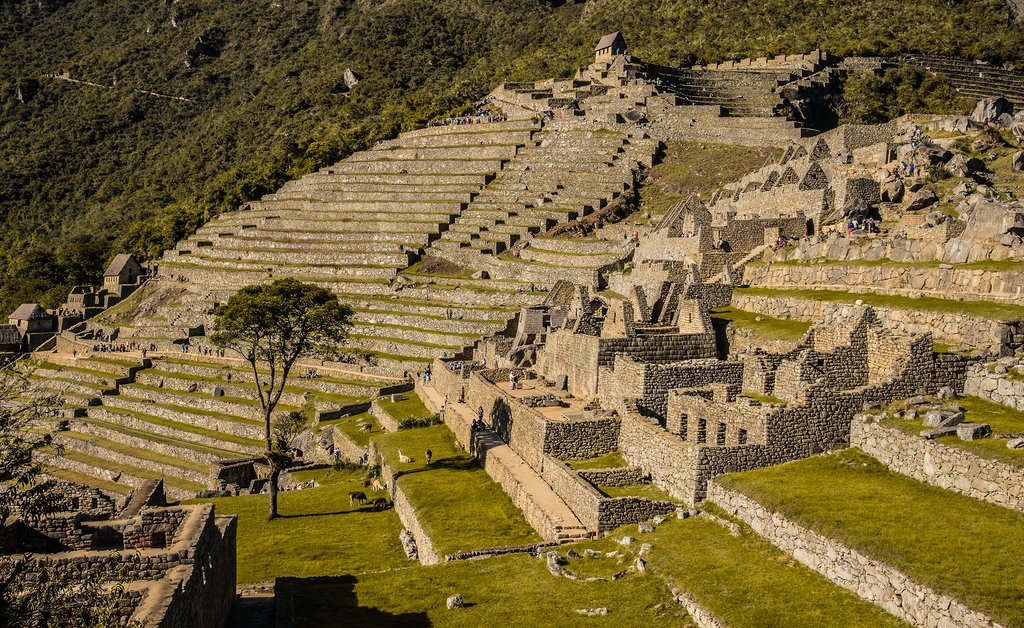Weather
March in the Sacred Valley is still classed as the rainy season, and for good reason: after February, and alongside January, it is the wettest time of year hereabouts. But the dry days are coming through more and more in and around Machu Picchu as March progresses. Temperatures stretch between highs of 65° F (18° C) and lows of 42° F (6° C). While the sun is starting to show more and more, the ruins are still regularly covered by clouds. Pack for hot, wet, and cold weather—all are possible this month.
Crowds & Costs
Those who have been in the Sacred Valley in February will note the dramatic rise in tourists to Machu Picchu and surrounds this month: to levels not seen since the previous October. The reason why is partly the improvement in the weather, with the dry season just around the corner—and partly the arrival of one of Peru's biggest celebrations, Semana Santa, or Holy Week.
This week-long festival, taking place in March or April the week before Easter, is holiday season for many Peruvians and South Americans. So whilst the early part of March is still a good time to find deals on hotels and tours, the later part of the month, should it coincide with Semana Santa, sees places put prices up to levels as high (or higher) than the main high season.
Chat with a local specialist who can help organize your trip.
Where to Go
The Inca Trail is back on the agenda for visitors to Machu Picchu this month after its annual month-long closure in February, but as with other trails, the going is still wet and muddy underfoot. The risk of landslides, with earth destabilized by the wet season rains, is still there.
If Semana Santa falls during March, it's well worth reserving some time for visits to some of the towns and villages in the Sacred Valley to check out the pageantry.
What to Do
It continues not to be the best season for hiking, although the Inca Trail is open again this month. Be careful on the more vertiginous trails such as the path up to Wayna Picchu, which will be very slippery.
That said, bear in mind that Machu Picchu, despite its highland setting, is surrounded by jungle: mostly cloud forest. Some of the activities in the vicinity—such as the Inca Jungle Trek, which involves cycling, zip-lining, and rafting as a 4-day adventure tour build-up to Machu Picchu—are best at this wet time of year.
Significant rainfall has rivers at very high levels, which can make it a great time to try rafting. Going on the water at this time in the jungle also means you are closer to canopy wildlife such as monkeys. Many rivers around Machu Picchu have Class IV rapids this month. And wildlife enthusiasts will also have an enjoyable time observing the flourishing plants and flowers in the region, which are approaching their best after a season of rain.
If you wish to travel by train from Cusco to Machu Picchu (Aguas Calientes train station) this month, services from Cusco's Poroy train station are not operating: you will be taken by bus for the Cusco-Ollantaytambo leg and continue by train to Aguas Calientes from there.
March Events
The big event in the Sacred Valley this month, should Easter fall in March or at the beginning of April, is Semana Santa, a "Holy Week" filled with festivities. Cusco's celebrations include, on the Monday of Holy Week, the festival of Señor de Los Temblores. These particular celebrations remember the earthquake of 1650 which damaged Cusco, with a 'Lord of the Earthquakes' effigy carried through the city.
More Helpful Information
Machu Picchu in February
Machu Picchu in April
Ultimate Guide to Machu Picchu
